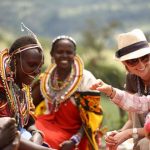
Best practice guidelines for great ape Tourism in Africa
Tourism becoming a popular leisure activity, it has emerged as one of the world’s major activities done on a daily basis. Global travelers are increasingly becoming desirous of adventure activities, those that create huge thrills within their souls, and most importantly, activities that can burn flames of memories for a lifetime.
The urge for trotters to travel to remote international wildlife sites to have themselves chances to encounter with the critically endangered gorillas, chimps and other primate species in their natural habitats has paved a huge way for great ape tourism in Africa to rise to great heights.
Though, if well managed, ape tourism can conserve the great apes in Africa as well as improving the economic status of the countries where they call homes, we still can’t deny the impact that it creates on the animals and their natural environments.
This is the very reason why the wildlife together with tourism bodies have drafted some simple rules and regulations to follow while visiting the apes. These are not really laws, but rather guidelines to develop both the existing and potential ape tourism sites in favor of conservation than just the mere exploitation of these gentle animals.
On any ape safari in Africa, visitors to trek these giants must be with permits. No trekker is allowed to enter into the forest to hunt for the apes without a permit that confirms his payments to cater for the park guide, conservation projects, park entrance fees and the monitoring team of the apes. On most African safaris, the assigned tour operators have booked permits for their clients in advance before the actual trip time.
Whether on a gorilla trekking in Bwindi, or chimp tracking in Kibale national park, trekkers should maintain an eight meters distance away from the great apes. It is very important not to come into so close contact with these wild animals as they can easily attack you since they are just starting to get used with human interactions. Even this distance is vital just in case anything happens, you have room to defend yourself.
Travelers with diseases like flu, cough or diarrhea are strictly not allowed to trek the apes in Africa, especially the gorillas and chimps because they can easily contract these diseases which would sometimes lead to death yet we are all in the struggle to see that we conserve the great apes.
Young children below the age of 15 years are prohibited from trekking the gorillas in Rwanda or chimps in Nyungwe national park as well as any other ape that can be trekked in Africa. This is to minimize the risk if exposing the apes to childhood diseases like the measles, mumps and chicken pox.
For gorilla trekking in Africa, each gorilla group must receive only one group of eight visitors per day and on meeting them, visitors spend strictly one hour with these gentle giants of the forest to minimize disturbances and the possible risks of infections.
Flash photography is not allowed while with the apes. So trekkers can take as many photos as they want provided the cameras don’t have flashlight as they can frighten away the apes and also may provoke an aggressive charge.
Trekkers are not allowed to eat, drink or smoke if they are within 200 meters radius with the great apes because food and other left overs may cause infections to the endangered apes.
For safe ape tours in Africa, such simple guidelines would enable all travelers to have a calm yet exciting ape experience for memories that won’t easily run away from their minds. Note that ape tourism in Africa can be done in Uganda, Rwanda and D. R. Congo.



